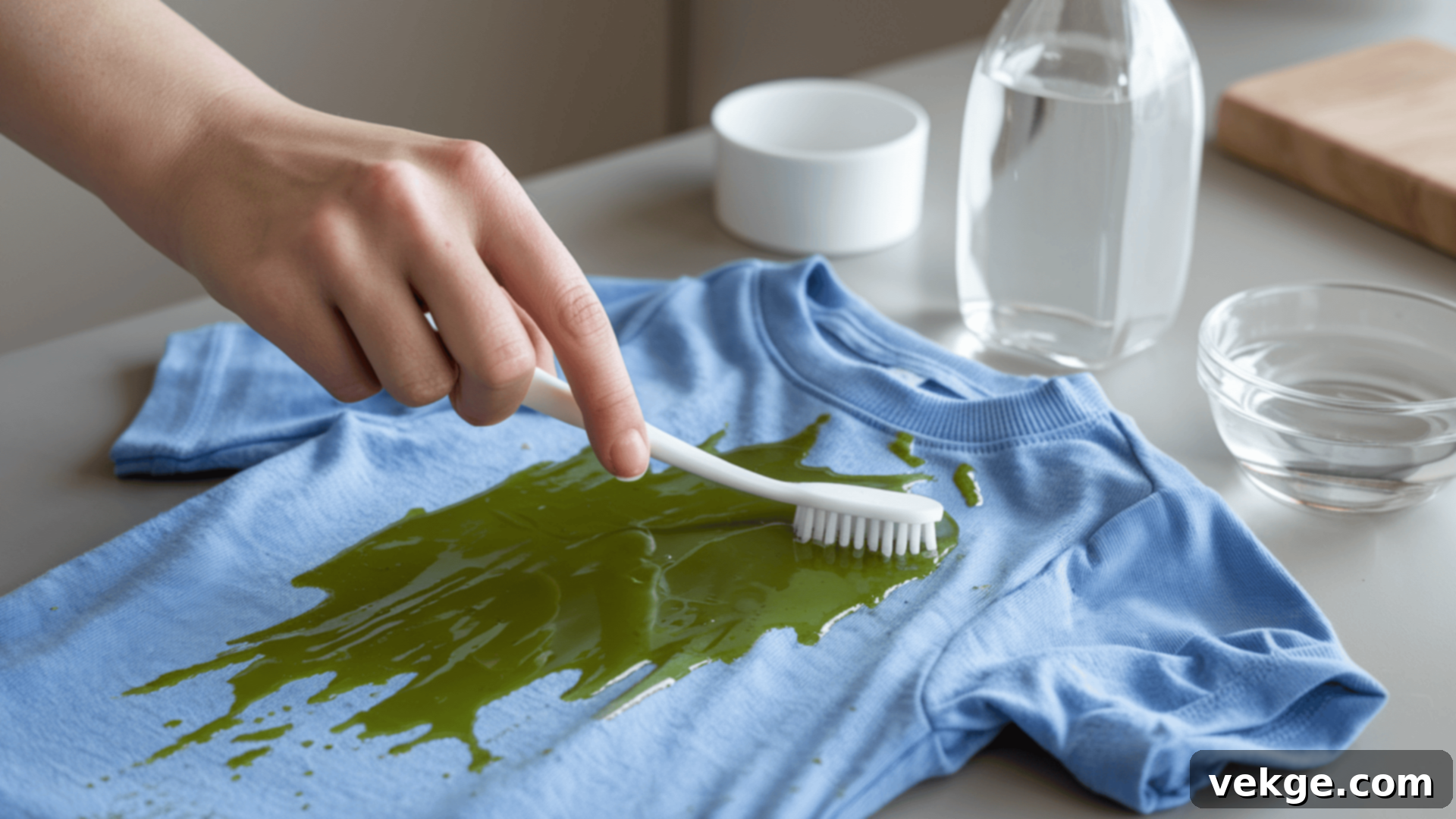Ultimate Guide: How to Get Slime Out of Clothes (Even Dried Slime!) Easily
Ah, slime! The joy it brings to kids often comes with the sticky aftermath on their favorite clothes. If you’re a parent, guardian, or just someone who’s had an unfortunate encounter with this gooey substance, you know the frustration. It’s easy to feel like a beloved shirt or a brand new pair of pants is destined for the trash once slime takes hold. But fear not! You absolutely do not have to throw anything out just yet.
I’ve been there, battling both fresh, gooey messes and stubborn, dried-up slime stains. The good news is, getting slime out of fabric doesn’t have to be a complicated, messy, or expensive ordeal. With the right approach and a few common household items, you can rescue your garments and restore them to their former glory. This comprehensive guide will show you precisely how to remove slime from clothes using simple, effective steps.
You’ll learn which everyday cleaners work best, what crucial mistakes to avoid, and how to safely treat even tricky fabrics like delicate wool or stretchy spandex. Forget the guesswork and expensive, specialized products. This is all about practical, proven advice that works. Let’s dive in and save that favorite shirt, hassle-free!
Quick Fix: How to Get Slime Out of Clothes Fast
Need a rapid solution for a fresh slime spill? Don’t panic! For immediate action, white vinegar or a good quality dish soap are your go-to heroes. They can often do the trick in minutes, getting you back to your day without needing any special cleaning agents.
What You’ll Need for Basic Slime Removal
- White vinegar or dish soap (brands like Dawn are excellent for cutting grease)
- Warm water
- A spoon, a dull knife, or the edge of a credit card
- An old toothbrush or a soft, clean cloth
- Washing machine (optional, but highly recommended for the final step)
Estimated Time for Quick Removal
- Preparation: Approximately 2 minutes (gathering supplies and initial scraping)
- Soak and Scrub: 5–10 minutes (allowing the solution to work and gentle scrubbing)
- Wash and Rinse: 10–15 minutes (if using a washing machine for a quick cycle, otherwise just rinsing)
Option 1: The Vinegar Method
White vinegar is a remarkably versatile and effective solution for breaking down slime. Its acidic nature helps dissolve the sticky polymers found in most slime formulations, making it easier to lift from fabric fibers. This method is particularly gentle and safe for a wide range of materials.
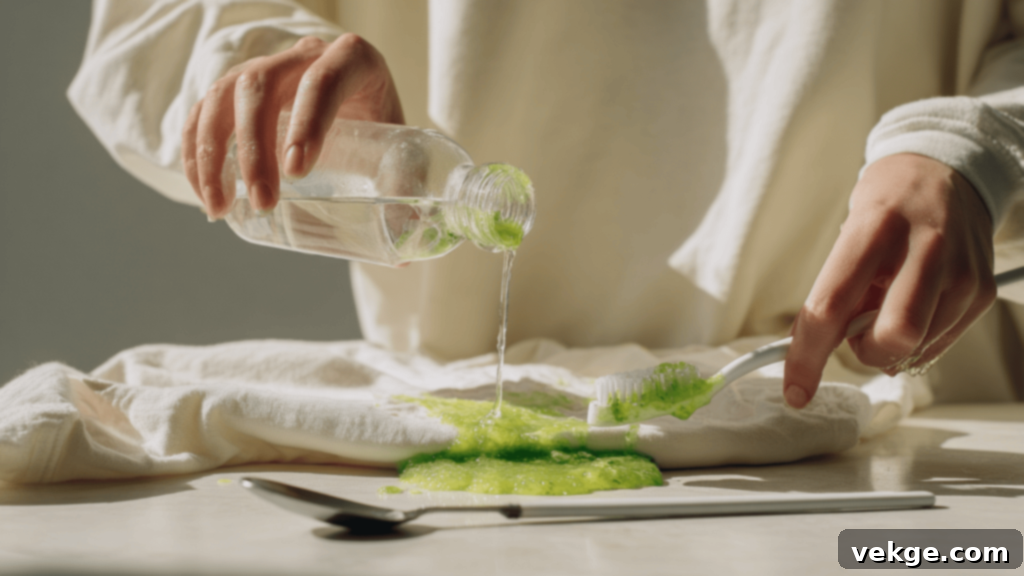
-
Scrape Off Excess Slime: Using a spoon, butter knife, or even the edge of a credit card, carefully remove as much loose slime as possible. Be gentle to avoid pressing the slime deeper into the fabric.
-
Soak the Area: Pour a generous amount of undiluted white vinegar directly onto the slime-affected area. Allow the fabric to soak in the vinegar for 5–10 minutes. This gives the acid time to begin breaking down the slime’s sticky components.
-
Gently Scrub the Stain: After soaking, take an old toothbrush or a soft cloth and gently scrub the stained area. You should see the slime starting to loosen and lift away. Work from the outside of the stain inwards to prevent spreading.
-
Rinse Under Warm Water: Hold the fabric under warm running water, rinsing from the back of the stain to help push any remaining residue out of the fibers. Continue rinsing until most of the slime and vinegar are gone.
-
Wash as Usual: Finally, machine wash the garment according to its care label instructions. For best results, use the warmest water setting safe for the fabric and a good quality laundry detergent.
Option 2: Dish Soap Power
Dish soap, especially brands known for cutting through grease like Dawn, is fantastic for slime removal. Many slimes contain oily or greasy elements, and dish soap’s surfactants are specifically designed to emulsify and lift these substances from surfaces, including fabric fibers.
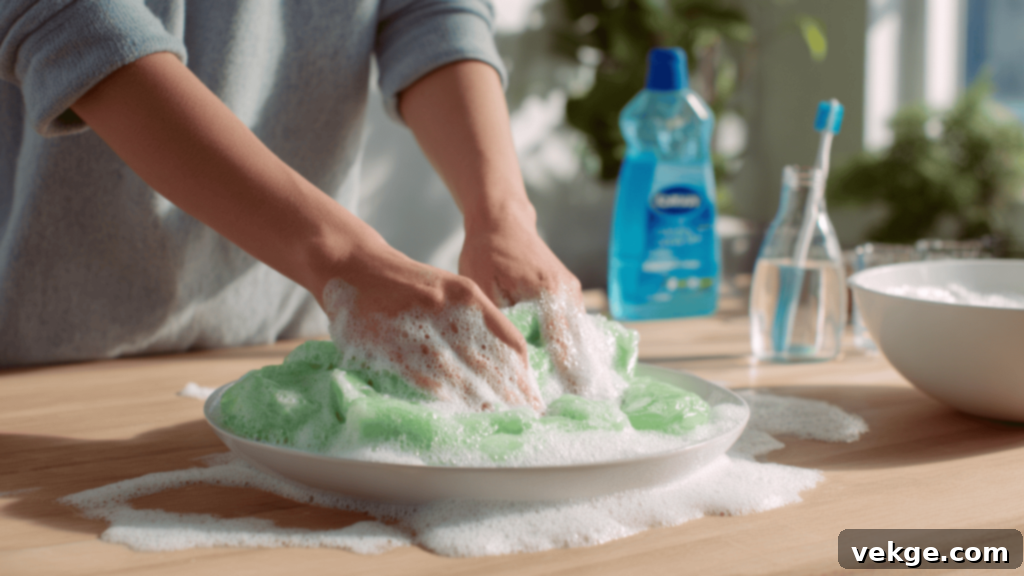
-
Scrape Off Excess Slime: As with the vinegar method, begin by carefully scraping away as much loose slime as possible using a dull tool. This crucial first step ensures the cleaning agent can directly target the embedded slime.
-
Apply Dish Soap: Apply a few drops of liquid dish soap directly onto the slime stain. You want enough to cover the area thoroughly, but not so much that it creates excessive suds.
-
Rub or Scrub the Stain: Gently rub the fabric together, or use an old toothbrush to work the dish soap into the slime. The soap will begin to break down the slime’s components. Continue for a minute or two until the slime starts to dissipate.
-
Rinse with Warm Water: Rinse the treated area under warm running water. You should see the slime and soap washing away. Continue rinsing until the water runs clear and no more slime residue is visible.
-
Wash the Garment: Launder the item as you normally would, following the care label. A full wash cycle ensures all remaining soap and slime particles are removed.
Crucial Tip: If the stain isn’t entirely gone after the first treatment, repeat the process from the scraping step once or twice more before putting the garment in a dryer. Heat from a dryer can permanently set any remaining slime residue, making it almost impossible to remove later.
Why Slime is a Laundry Nightmare (and How to Conquer It)
Slime, with its captivating texture and vibrant colors, might seem like innocent fun, but its composition makes it a formidable foe in the laundry room. Understanding what you’re up against can significantly improve your cleaning success and help you avoid common mistakes.
- It’s Made with Glue and Polymers: The primary ingredients in most slimes are glues (often PVA-based) and other polymers. These substances are designed to be sticky and flexible, binding tightly to the microscopic fibers of your clothing. This strong adhesion is why water alone is rarely effective in removing it. The polymers essentially “hug” the fabric strands, making simple rinsing insufficient.
- It Resists Quick Rinsing and Leaves a Film: Even after you manage to remove the bulk of the slime, it often leaves behind a stubborn, sticky, or sometimes greasy film. This residue isn’t just cosmetic; it’s the remaining polymer particles that have become deeply embedded in the fabric. This is precisely why a proper pretreatment with a dissolving agent is essential before a regular wash. Without it, the film often remains, leading to a dull, stiff patch on your clothing.
- It Reacts to Moisture and Temperature: Slime is highly sensitive to its environment. Applying the wrong substance or temperature can dramatically change its consistency. For example, hot water can cause some slime components to melt and smear, spreading the stain further or driving it deeper into the fibers. Conversely, certain chemicals can make it harden or become more brittle. Using the incorrect method first can “set” the stain, making subsequent removal much more difficult. This highlights the importance of choosing the right cleaning agent and technique for the specific type of slime and fabric.
Armed with this knowledge, you can approach slime stains more strategically and avoid actions that might worsen the problem. Now, let’s walk through a detailed step-by-step guide for proper slime removal.
Comprehensive Step-by-Step Guide: How to Get Slime Out of Clothes
This detailed method works wonders on both fresh, gooey slime and older, dried-on stains. Follow these steps carefully to maximize your chances of success using readily available household cleaning supplies.
Step 1: Scrape Off Excess Slime
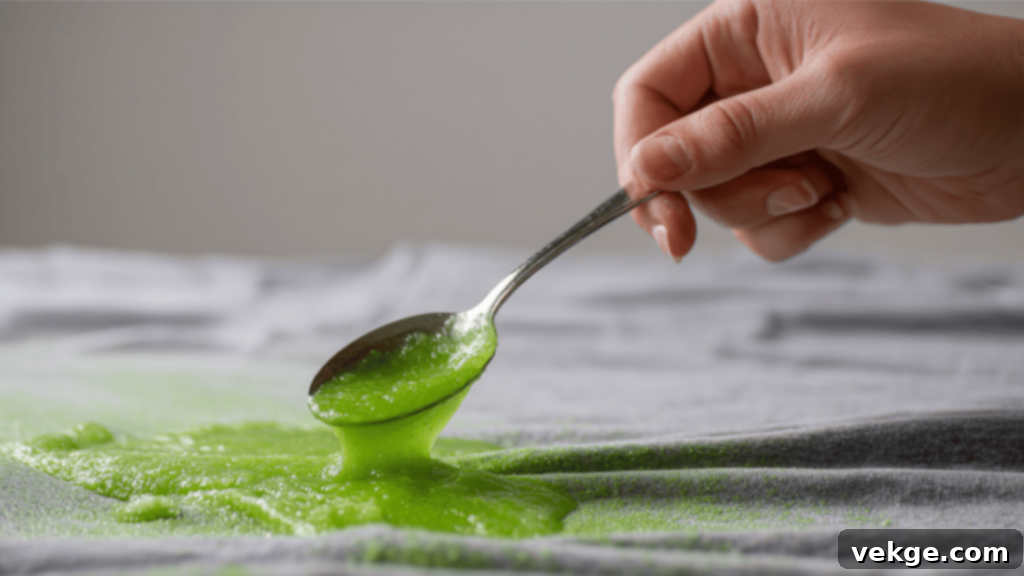
The very first and most critical step is to remove as much physical slime as possible from the surface of the fabric. This prevents the slime from spreading and allows your cleaning agents to work directly on the embedded residue.
- Choose Your Tool: Use a blunt object like a spoon, a butter knife, the edge of an old credit card, or even a plastic scraper. Avoid anything sharp that could damage the fabric.
- Gentle Technique: Work slowly and gently. Position the tool under the edge of the slime and carefully lift or scrape it away. The goal is to remove chunks without pushing the slime deeper into the fabric fibers, which can happen if you apply too much pressure or try to rub it off.
- For Dried Slime: If the slime is dried, it might be brittle. You can often chip it off carefully. For particularly stubborn dried slime, consider freezing the garment for an hour or two (as described in the alternative methods section) to make it easier to flake off.
Thorough scraping significantly enhances the effectiveness of the subsequent cleaning steps, making the entire process much smoother.
Step 2: Pretreat with Soap or Detergent
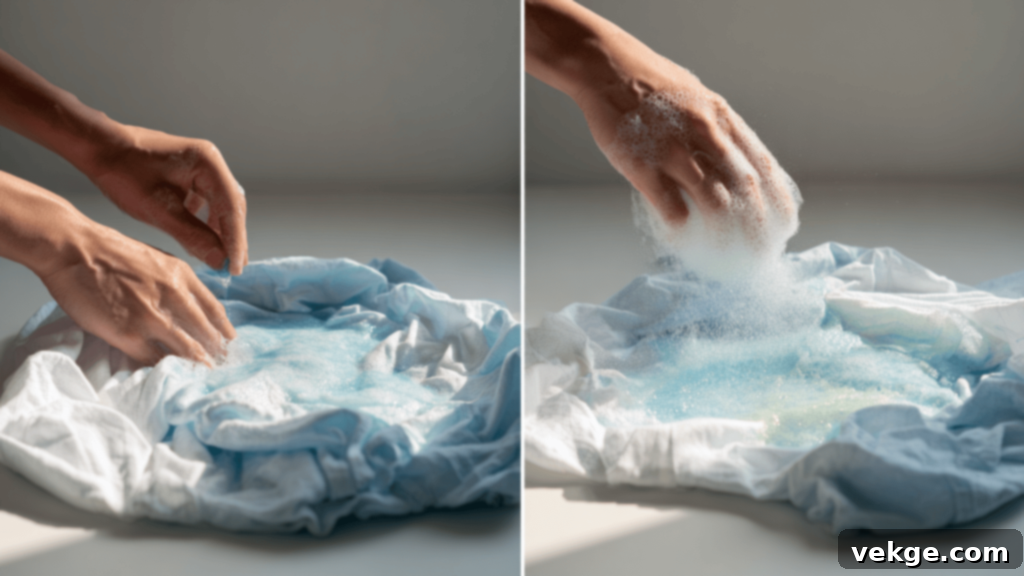
This pretreatment stage is vital for breaking down the sticky binders and oily residues often found in slime, preparing the stain for deeper cleaning.
Option 1: Dish Soap (e.g., Dawn)
- Best for: Fresh, gooey slime, especially those with oily or greasy components.
- Why it Works: Dish soap contains powerful surfactants that excel at emulsifying fats and oils. Many slimes have a slightly greasy feel, and dish soap effectively cuts through this, weakening the slime’s bond with the fabric.
- Application: Apply a few drops directly onto the stain. Gently rub it in with your fingers or a soft brush, creating a light lather.
Option 2: Liquid Laundry Detergent (Heavy-Duty)
- Best for: Older, dried slime, or when you need stronger cleaning power.
- Why it Works: High-quality laundry detergents are formulated with enzymes and other cleaning agents designed to lift and dissolve tough stains, including those based on glue and polymers.
- Application: Apply a small amount of liquid laundry detergent directly to the slime. Ensure it covers the entire stained area.
Once applied, let your chosen cleaner sit on the stain for 5–10 minutes. This dwell time allows the product to penetrate and begin dissolving the slime before you move to the next step.
Step 3: Apply a Targeted Cleaning Solution
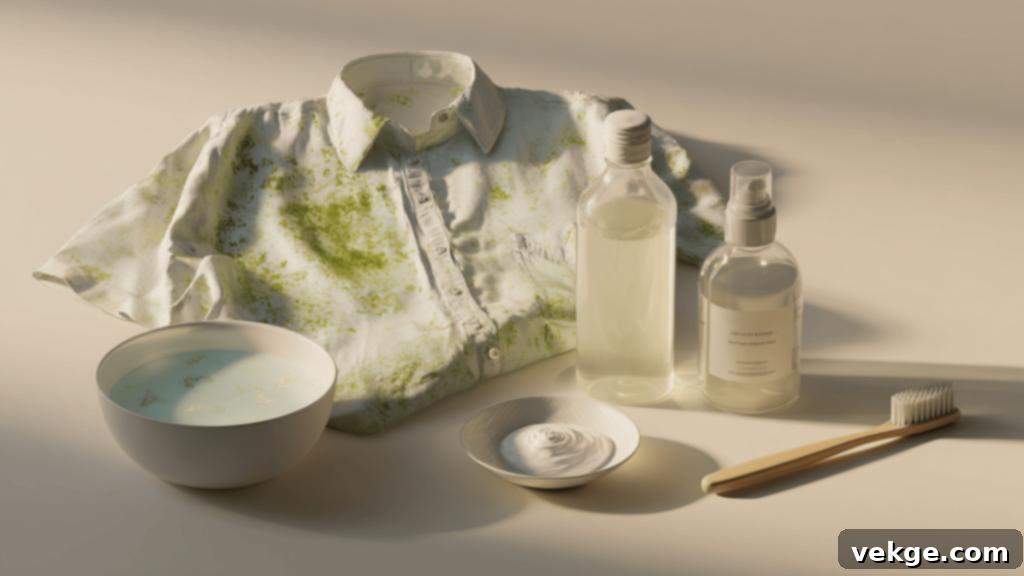
This step introduces a specific agent to further break down the slime and loosen its grip on the fabric fibers. Choose the solution that best suits your fabric type and the stubbornness of the stain.
- White Vinegar:
- Best For: General slime stains, especially for initial treatment or for delicate fabrics where stronger chemicals are risky. It’s safe, natural, and effective.
- Application: Saturate the stained area with white vinegar. Let it soak for 5-10 minutes.
- Rubbing Alcohol (Isopropyl Alcohol):
- Best For: More stubborn, dried, or particularly sticky slime. Alcohol can dissolve many types of glues and polymers.
- Application: Before applying, always test on an inconspicuous area of the garment (like an inside seam) to ensure it doesn’t cause discoloration or damage. Dab a small amount onto the stain using a cotton ball or clean cloth. Allow it to sit for a few minutes.
- Baking Soda Paste:
- Best For: Heavy slime buildup or stains with an oily component. It acts as a gentle abrasive and helps absorb residues.
- Application: Mix baking soda with a tiny bit of water or vinegar to form a thick paste. Apply the paste directly over the slime stain, ensuring it’s completely covered. Let it dry for 15-30 minutes, or until it forms a crust.
After the chosen solution has had time to work, gently scrub the area with an old toothbrush or a soft cloth. You should see the slime starting to break apart and lift from the fabric.
Step 4: Rinse Thoroughly with Warm Water
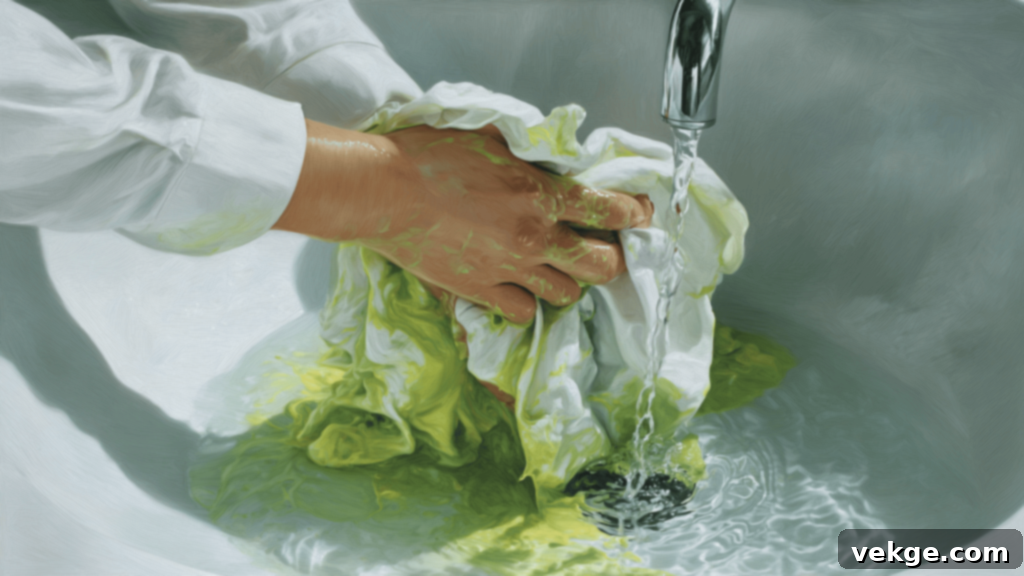
Once the slime has been thoroughly loosened and broken down by your chosen cleaning solution, it’s time to rinse it away. This step is crucial for removing dissolved slime particles and preparing the garment for its final wash.
- Direction Matters: Hold the stained area under warm running water. It’s most effective to rinse from the back of the stain. This technique helps push the loosened slime and cleaning solution *out* of the fabric fibers, rather than further embedding them.
- Thorough Rinsing: Continue rinsing until the water runs clear and you no longer see any visible slime residue or feel stickiness on the fabric. You might need to gently rub the area under the water to help dislodge any remaining particles.
This thorough rinse prevents the slime from being redeposited onto other parts of the fabric during the washing machine cycle and reduces the amount of residue that needs to be cleaned by the detergent.
Step 5: Wash and Air Dry (Crucial!)

The final step is to properly wash the garment and, importantly, inspect it before drying. This step ensures any microscopic slime particles and cleaning agents are fully removed.
- Machine Wash: Place the garment in your washing machine and wash it as you normally would, following the instructions on the fabric care label. Use a good quality laundry detergent. For most robust fabrics, choose the warmest water setting safe for the material; warmer water can help lift any remaining residues.
- Inspect Before Drying: This is perhaps the most critical part of this step. Before placing the garment in a hot dryer, carefully inspect the stained area. Hold the fabric up to the light to check for any faint residue or stickiness. If you still see or feel any trace of slime, DO NOT put the item in the dryer.
- Why Air Dry? Heat from a clothes dryer can permanently set any remaining slime or its residue into the fabric fibers, making it significantly harder, if not impossible, to remove later. If the stain persists, repeat the entire slime removal process from Step 1 before attempting to dry it. Once you are confident the stain is completely gone, you can proceed with machine drying if suitable for the fabric, or air dry it naturally.
Patience and vigilance at this stage will prevent you from accidentally “baking in” a slime stain, saving your garment from permanent damage.
Beyond the Basics: Alternative Slime Cleaning Methods for Stubborn Stains
While the step-by-step guide is highly effective, some slime stains are particularly stubborn, or you might prefer different household items. Here are additional methods that can be incredibly useful, especially for dried-on slime or specific fabric types.
1. The Fizzing Power of Vinegar + Baking Soda Combo
This dynamic duo creates a chemical reaction that helps break down and lift dried, thick, or particularly sticky slime. It’s especially effective when basic soap or vinegar alone isn’t quite enough.
- Method: First, gently sprinkle a generous amount of baking soda directly over the entire slime stain. Ensure the slime is fully covered. Then, carefully pour a small amount of white vinegar over the baking soda. You’ll observe a fizzing reaction as the two combine.
- How it Works: The fizzing action helps to agitate and lift the slime from the fabric fibers, while the acidity of the vinegar and the mild abrasive quality of the baking soda work together to dissolve and scour away the residue.
- Follow Up: Let the mixture bubble and sit for 1-2 minutes. After the fizzing subsides, gently scrub the area with an old toothbrush or a soft cloth. Rinse thoroughly with warm water, making sure to remove all baking soda residue, then wash the item as usual.
2. Rubbing Alcohol for Dried-On Slime
Rubbing alcohol (isopropyl alcohol) is an excellent solvent for many types of glues and polymers, making it highly effective for breaking down stubborn, dried slime stains that have become brittle and hard.
- Precaution: Always test rubbing alcohol on an inconspicuous area of the fabric first. It can sometimes affect colors or delicate materials.
- Method: Apply a small amount of rubbing alcohol to a clean cotton ball, cotton pad, or a soft, white cloth. Dab the alcohol directly onto the slime stain. Avoid rubbing vigorously, as this can spread the stain.
- Dwell Time: Allow the alcohol to penetrate and work on the slime for 5 to 10 minutes. You might notice the slime softening or dissolving.
- Follow Up: Gently scrub or blot the area to lift the dissolved slime. Rinse the fabric thoroughly with warm water to remove the alcohol and slime residue, then proceed with a regular machine wash.
3. Freeze it Out: The Cold Method for Sticky Slime
For very sticky, gooey, or runny slime, freezing can be a surprisingly effective first step. Cold temperatures harden the slime, making it less adhesive and easier to remove in solid chunks.
- Method: Carefully place the slime-stained garment into a plastic bag (to prevent the slime from transferring to other freezer contents). Place the bag in the freezer for one to two hours, or until the slime is completely frozen solid.
- Removal: Once the slime is hardened, take the garment out. You can often chip, flake, or gently peel the frozen slime directly off the fabric without smearing it further. Use a dull knife or the edge of a spoon to help lift it.
- Follow Up: After removing the frozen slime, rinse the area under warm water. Any remaining residue can then be spot cleaned using dish soap or vinegar before a full wash.
4. Natural Brighteners: Lemon Juice or Hydrogen Peroxide
These natural cleaning agents can be effective for slime stains, particularly on white or light-colored fabrics, as they also possess mild bleaching properties.
- Caution: Due to their lightening properties, avoid using lemon juice or hydrogen peroxide on dark or colored clothing, as they can cause fading or discoloration.
- Method: Soak the slime stain directly in fresh lemon juice or 3% hydrogen peroxide for approximately 5 to 10 minutes.
- How it Works: Both lemon juice (citric acid) and hydrogen peroxide act as mild oxidizers, helping to break down organic matter and certain types of polymers found in slime.
- Follow Up: After soaking, gently scrub the stained area with a soft brush, rinse thoroughly with warm water, and then launder the garment as usual.
Tackling Dried or Old Slime Stains: Advanced Strategies
When slime has been allowed to dry or has sat on fabric for an extended period, it can become significantly more challenging to remove. The polymers harden, and the bond with the fabric fibers strengthens. These advanced methods are designed to tackle these tougher, older stains.
Extended Soaking Methods
For dried or set-in slime, a longer soaking period is often the key to rehydrating and softening the hardened residue, making it more amenable to removal.
- Preparation: Start by gently scraping off any loose, brittle slime particles as described in Step 1 of the main guide.
- Soaking Solution: Fill a basin or tub with warm water. Add a generous amount of liquid laundry detergent or a cup of white vinegar to the water. These agents will begin to work on dissolving the slime.
- Soak Time: Submerge the stained portion of the garment (or the entire item if the stain is large) in the solution. Allow it to soak for at least 30 minutes. For very thick or old stains, extend the soaking time to several hours, or even overnight. The longer contact time helps to penetrate and soften the hardened slime.
- Gentle Agitation: Periodically, while the item is soaking, gently rub or scrub the stained area with a soft cloth or toothbrush. This helps to work the solution into the fibers and loosen the slime.
After a thorough soak, proceed with the scrubbing and rinsing steps from the main guide.
Repeat Treatment Cycles: Patience is Key
Dried slime rarely comes out with a single treatment. Patience and persistence are crucial. It’s common to need multiple rounds of cleaning.
- Inspect Carefully: After the first soak, scrub, and wash cycle, rigorously inspect the stain *before* drying the fabric. As emphasized, heat can permanently set any remaining residue.
- Re-Treat: If the stain is still visible, don’t despair! Repeat the pretreatment and cleaning solution steps (Steps 2 and 3 from the main guide). You might even consider trying a different cleaning agent than the one used initially (e.g., if vinegar didn’t quite work, try rubbing alcohol or a baking soda paste on the next attempt).
- Gradual Reduction: Understand that you may be gradually reducing the stain with each cycle rather than removing it entirely in one go. Be consistent and gentle, and the stain will eventually lighten and disappear without damaging the fabric.
When to Call in the Pros: Professional Cleaning Advice
Despite your best efforts, some slime stains might prove too challenging for home remedies. Knowing when to seek professional help can save a valuable garment from permanent damage.
- Delicate or Expensive Fabrics: If the slime is on a delicate material like silk, rayon, or a very expensive garment, it’s often safer to consult a professional cleaner. They have specialized solvents and techniques that are gentler on sensitive fabrics.
- Persistent Stains: If you’ve tried several different methods (vinegar, dish soap, alcohol, freezing, baking soda) and repeated cycles, and the slime still won’t budge, it might be time for expert intervention.
- Sentimental Value: For items with significant sentimental value that you absolutely cannot risk damaging, professional cleaning offers the best chance for complete, safe stain removal.
Acting sooner rather than later gives professional cleaners the best opportunity to completely remove the stain. The longer a stain sits, even after home attempts, the more difficult it becomes to fully eradicate.
Fabric-Specific Slime Removal: Protecting Your Garments
Not all fabrics are created equal, and what works wonderfully on a sturdy cotton tee might be disastrous for a delicate silk blouse. Always check the care label first, and then refer to this guide for fabric-specific advice.
| Fabric Type | Safe Cleaning Methods | Avoid | Notes |
|---|---|---|---|
| Cotton | Dish soap, laundry detergent, white vinegar, rubbing alcohol (test first). Can withstand moderate scrubbing. | High heat before the stain is completely gone. Harsh bleaching agents on colored cotton. | Cotton is quite durable. You can be relatively firm with scrubbing. Ensure all residue is gone before machine drying to prevent setting. |
| Polyester/Synthetics | Liquid laundry detergent, white vinegar, gentle dish soap. Soft scrubbing. Freezing method works well. | Hot water (can melt synthetic fibers and set stains), harsh scrubbing (can damage fibers), strong chemical solvents. | Synthetic fibers can sometimes react poorly to heat, so use lukewarm water. Let detergents/vinegar sit longer to penetrate the less absorbent fibers. Always air dry. |
| Silk/Wool (Delicates) | White vinegar (diluted 1:1 with water), mild detergent (pH-neutral, designed for delicates), cool water soaking. Blotting, not scrubbing. | Rubbing alcohol, hydrogen peroxide, aggressive scrubbing, hot water, harsh chemical cleaners. | These natural fibers are very delicate. Blot gently instead of scrubbing. If the stain is stubborn, professional cleaning is highly recommended to prevent irreversible damage. Lay flat to air dry. |
| Spandex/Lycra | Dish soap, gentle hand rubbing, lukewarm water rinse. Freezing method can be good for initial removal. | Heat (can break down elasticity), alcohol (can damage elastic fibers), harsh chemical solvents, rough handling (wringing, aggressive scrubbing). | Elastic fibers like Spandex are sensitive. Avoid any method that applies excessive heat or strong solvents. Always air dry to preserve elasticity and garment shape. |
When in doubt, always err on the side of caution. Start with the gentlest method possible, and if necessary, consult a professional dry cleaner for valuable or delicate items. A small patch test on an unseen area of the garment is always a good practice before applying any new cleaning solution to the stain.
Emergency Slime Removal: Cleaning Without Washing (For Emergencies)
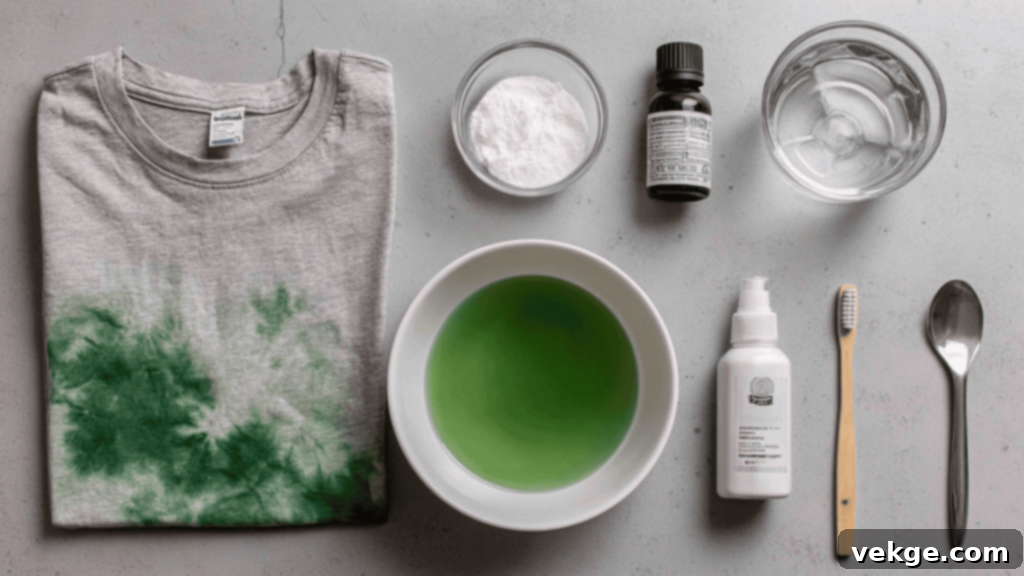
Sometimes, slime happens when you’re far from your laundry room – at school, in the car, or out in public. These quick fixes are designed to prevent the stain from spreading or setting until you can perform a proper wash.
At School or During Playdates
If your child comes home (or calls from school) with a fresh slime stain, immediate action can make a huge difference.
- Blotting First: Start by using dry paper towels, napkins, or a clean tissue to gently blot and lift off as much surface slime as possible. Avoid rubbing, as this can press the slime deeper into the fibers.
- Water and Hand Soap (If Available): If there’s a sink nearby (like in a school bathroom or kitchen), run the affected fabric area under cold water. Apply a small amount of liquid hand soap (which is often similar in composition to mild dish soap) directly to the stain. Gently rub the fabric together, or use your fingers to work the soap into the slime. Rinse well under cold water.
- The Cold Pack Trick: If a sink isn’t accessible, try to harden the slime. Wrap the stained area in ice (if available, e.g., from a drink) or press it against a cold object like a chilled water bottle or a cold pack. Once the slime hardens, you can often chip or peel off significant portions without smearing.
In Public Places or on the Go
When you’re completely out and about, with limited resources, these quick solutions can minimize the damage.
- Hand Sanitizer: Many hand sanitizers contain alcohol, which can act as a mild solvent for slime. Dab a small amount of hand sanitizer onto the stained area. Gently rub it in with a clean tissue or cloth. This can help to break down and loosen the stickiness.
- Wet Wipes: Regular wet wipes (baby wipes or cleansing wipes) can be surprisingly effective for fresh, surface slime. They contain mild detergents and moisture that can help lift the goo. Blot and wipe the area, gently removing the slime.
Remember, these emergency methods are primarily for containment and initial removal. They are not a substitute for a full wash cycle, but they can prevent a minor mishap from becoming a permanent stain until you get home.
What Not to Do: Common Slime Removal Mistakes
Just as important as knowing what to do is knowing what to avoid. Certain actions can make a slime stain worse, permanently damage your clothing, or make the removal process much more difficult.
- Applying Heat Before the Stain is Gone: This is arguably the most critical rule. Heat, whether from a hot water wash cycle, a clothes dryer, or even ironing, can cause the glue and polymer components of slime to melt and permanently fuse with the fabric fibers. Once “cooked” into the fabric, slime becomes incredibly difficult, if not impossible, to remove. Always confirm the stain is completely gone before introducing heat.
- Scrubbing Too Hard or Vigorously: While some gentle scrubbing is necessary, aggressive or rough scrubbing can be counterproductive. On one hand, it can push the slime deeper into the fabric’s weave, making it harder to extract. On the other hand, especially on delicate fabrics, vigorous scrubbing can cause pilling, stretching, or even tear the material, leading to irreversible damage. Always use gentle, consistent motions.
- Mixing Too Many Cleaners Recklessly: It might be tempting to combine multiple cleaning products (e.g., vinegar, rubbing alcohol, and bleach) in an attempt to create a “super cleaner.” However, this can be dangerous and ineffective. Mixing certain chemicals can create toxic fumes (e.g., bleach and vinegar) or cause unforeseen chemical reactions that damage fabric, remove color, or leave behind new, harder-to-remove residues. Stick to one method at a time, rinse thoroughly, and then try another if needed.
- Ignoring Fabric Care Labels: Always consult the garment’s care label before applying any cleaning method. These labels provide crucial information about fabric composition and recommended washing temperatures, which can prevent accidental damage. A method suitable for sturdy cotton might ruin a delicate silk blend.
- Letting the Stain Sit for Too Long: While dried slime can still be removed, the longer a slime stain is allowed to set and dry on a garment, the more challenging it becomes to remove. The polymers bond more strongly to the fibers over time. Prompt action is always your best ally in slime stain removal.
By avoiding these common pitfalls, you significantly increase your chances of successfully removing slime and preserving your clothing.
Final Thoughts: Keep Your Clothes Slime-Free!
You now possess a comprehensive arsenal of knowledge and techniques to tackle even the most stubborn slime stains. I’ve learned through my own experiences that with the right method and a bit of patience, you truly can save everything from a child’s favorite slime-covered shirt to more delicate fabrics that you thought were beyond hope.
The key takeaways are simple yet powerful: act quickly, understand the nature of the stain, choose the appropriate cleaning agent for your specific fabric, and critically, avoid heat until you are absolutely certain the slime is gone. These principles will guide you through almost any slime mishap.
So, the next time that vibrant, gooey mess makes an unexpected appearance on clothing, you’ll be ready. No stress, no wasted garments, just practical solutions that work. Remember, the quicker you treat the stain, and the more careful you are with your chosen method, the better the outcome will be.
Want more easy cleaning tips, practical household hacks, and real-life solutions for everyday messes? Be sure to check out other articles on our website for quick guides that save you time, money, and a whole lot of frustration. Happy cleaning!
